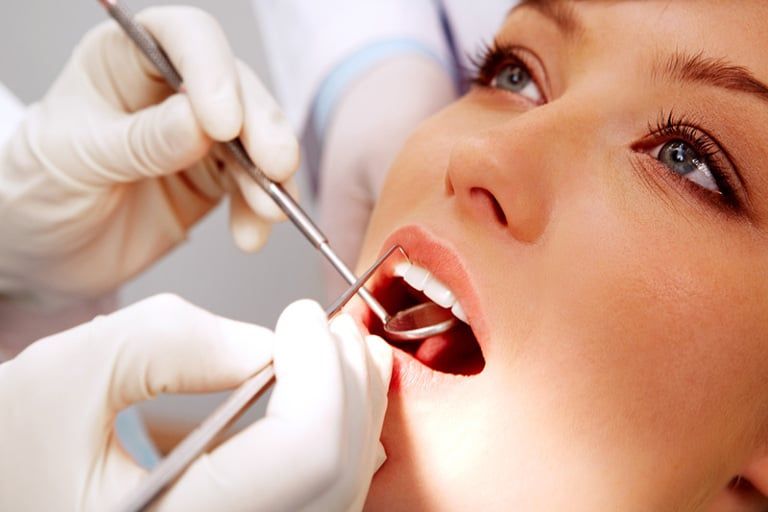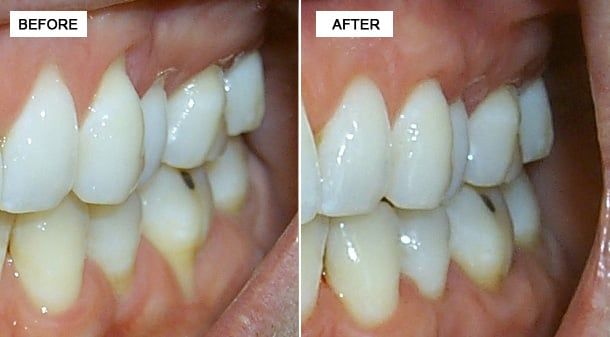Dr. Sean Roth
916.983.1114
2310 E. Bidwell St., #100
Folsom, CA 95630
Cosmetic & Family Dentistry
After-Hours Emergency: 916.812.4775
New patients receive a comprehensive examination which includes a screening for oral cancer, gum and bone disease, blood pressure, and systemic disorders. A routine oral exam is performed on established patients to determine any changes in dental and health status since the previous visit.
Your gum tissue is measured with a fine instrument ruler to calibrate in millimeters pocket depth between the tooth and the connective gum tissue around the tooth. Pocket depths more than 4 millimeters could indicate disease and infection. The deeper the pocket, the greater the extent plaque bacteria collects and infection in gum disease develop.
X-rays are taken as needed.
Tooth scaling and root planing occur as needed.
Routine cleanings also include a professional polishing (Prophy) that removes only the soft sticky plaque that is above the gum line.
Research has shown that gum disease can influence heart disease and other health conditions in negative ways. They suggest that gum disease could even be a more serious factor in heart disease than smoking, cholesterol, hypertension or age. One reason for this is the fact that the bacteria found in diseased gums can come loose and move throughout the body. When this bacteria reaches arteries, it can cause arterial plaque to build up and harden which in return adversely affects blood flow.

Periodontal diseases are infections of the gums which gradually lead to the destruction of the bone support around your natural teeth. These diseases affect more that 80% of Americans by the age of 45.
Dental plaque is the primary cause of gum disease. Bacteria found in plaque produce enzymes and toxins which injure the gums. Injured gums turn red, swell and bleed easily.
If this injury is prolonged, the gums separate from the teeth, causing pockets (spaces) to form.
Plaque can also harden into a rough, porous substance known as calculus (tartar).
This can occur both above and below the gum line. As periodontal diseases progress, the supporting gum tissue and bone that holds teeth in place deteriorate.
If left untreated, this leads to tooth loss. Pain is usually not present until damage from this disease is very advanced.
Proper brushing of teeth can be done in three steps:
1) Brush teeth gently using a circular motion along the outside and inside of the tooth surface while holding the brush at a 45 degree angle.
2) Make sure to brush each tooth individually and to use the front half of the brush in a circular motion vertically behind the front teeth.
3) Place the brush against the top of your teeth using a gentle back-and-forth motion to brush. After brushing all your teeth, be sure to brush your tongue in order to remove odor-producing bacteria.
Break off about 18 inches of floss and wind some of it around your middle finger (3 turns); this finger will take up the floss as it becomes dirty. Shorten the length between the two fingers to 6 inches and wind some floss (1 turn) around the opposite middle finger. Hold the floss tightly between your thumbs and index fingers. Guide the floss between your teeth using a gentle rubbing motion. When the floss reaches the gum line, curve it into a C-shape against one tooth. Gently slide it into the space between the gum and the tooth. Hold the floss tightly against the tooth as you gently rub the side of the tooth with an up and down motion. Before retrieving it, reverse the C-shape to clean the adjacent tooth surface as well.
As you finish cleaning each tooth, wind the dirty floss once around the first middle finger and slide more new length of floss to proceed to the next teeth
Tooth scaling removes plaque and hard crusty calculus deposits, also known as tartar. Both of which are loaded with bacteria.
Sub-gingival tooth scaling is necessary when plaque and tartar are detected below the gum line.
After scaling the teeth, roots may need to be planed to smooth the root surface. Soft tissue will re-attach itself to a smooth tooth surface.
Dr. Roth may also recommend medications to help control infection, pain, or to encourage healing.

Root exposure resulting from gingival tissue recession may pose multiple problems for patients:
- Undesirable Aesthetics
- Root Sensitivity
- Impaired Oral Hygiene
- Increased Caries Susceptibility
- Teeth May Become Loose
A gingival tissue graft will restore the proper gum tissue structure around the tooth.

Our office provides smile makeovers to achieve the beautiful, natural look you seek. We can reshape your natural teeth to make them straighter or more youthful in appearance. Our office makes it convenient to those living in or near Folsom to receive great cosmetic dentistry!